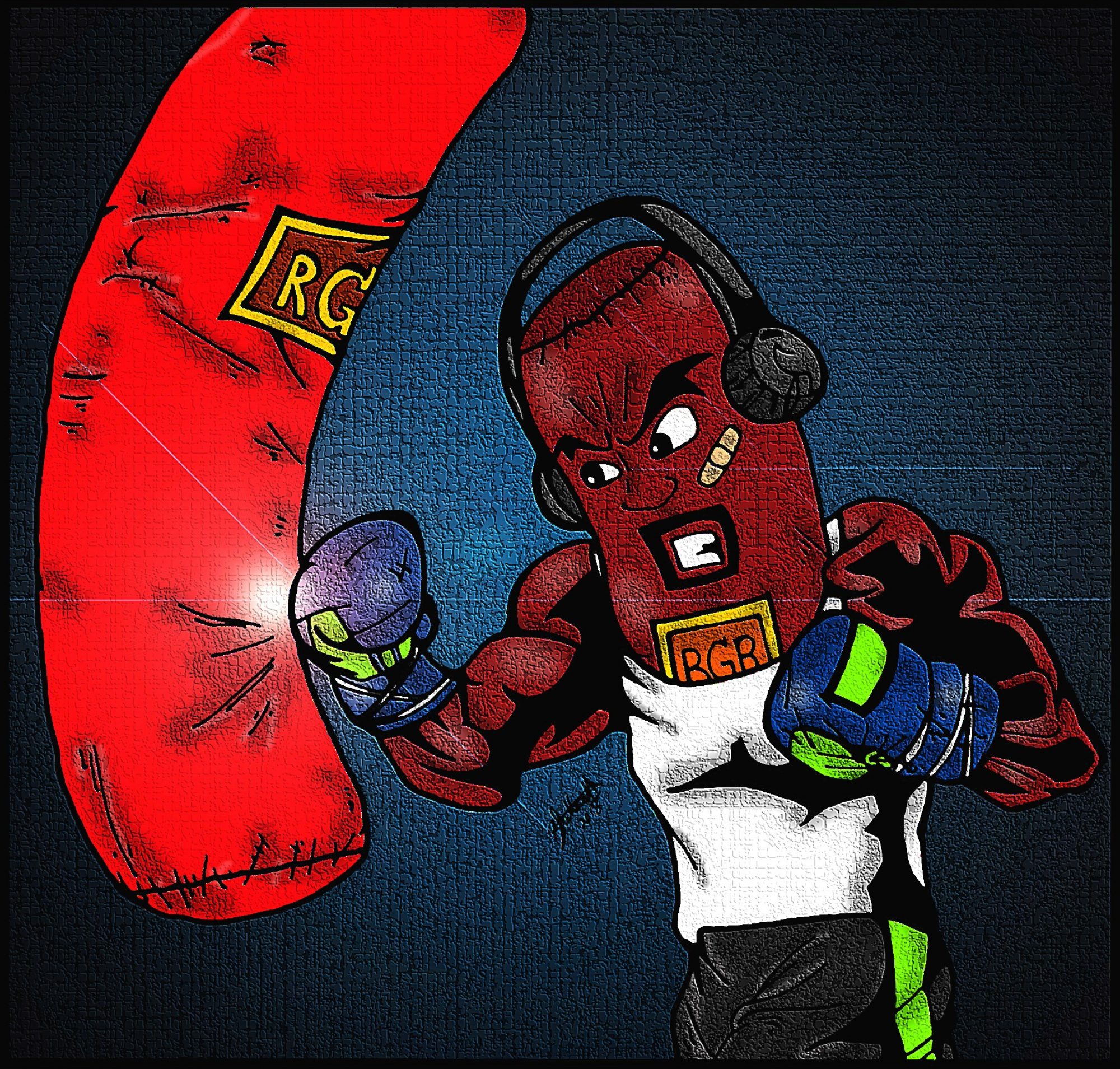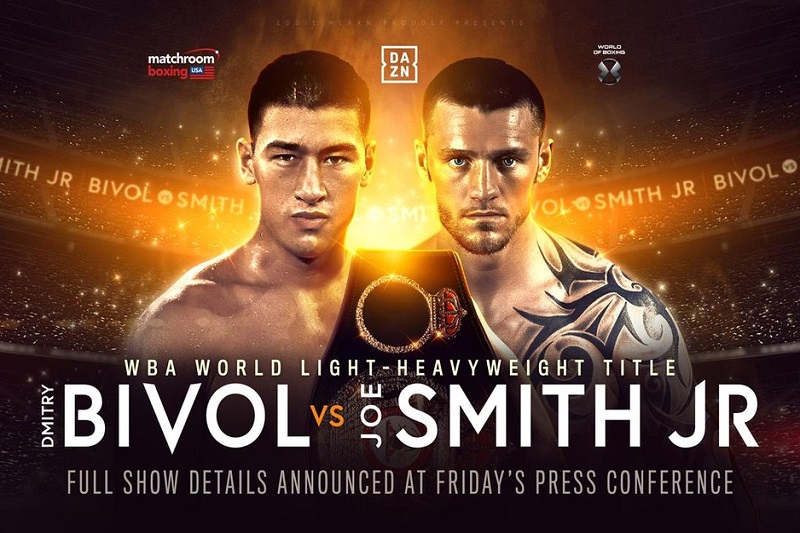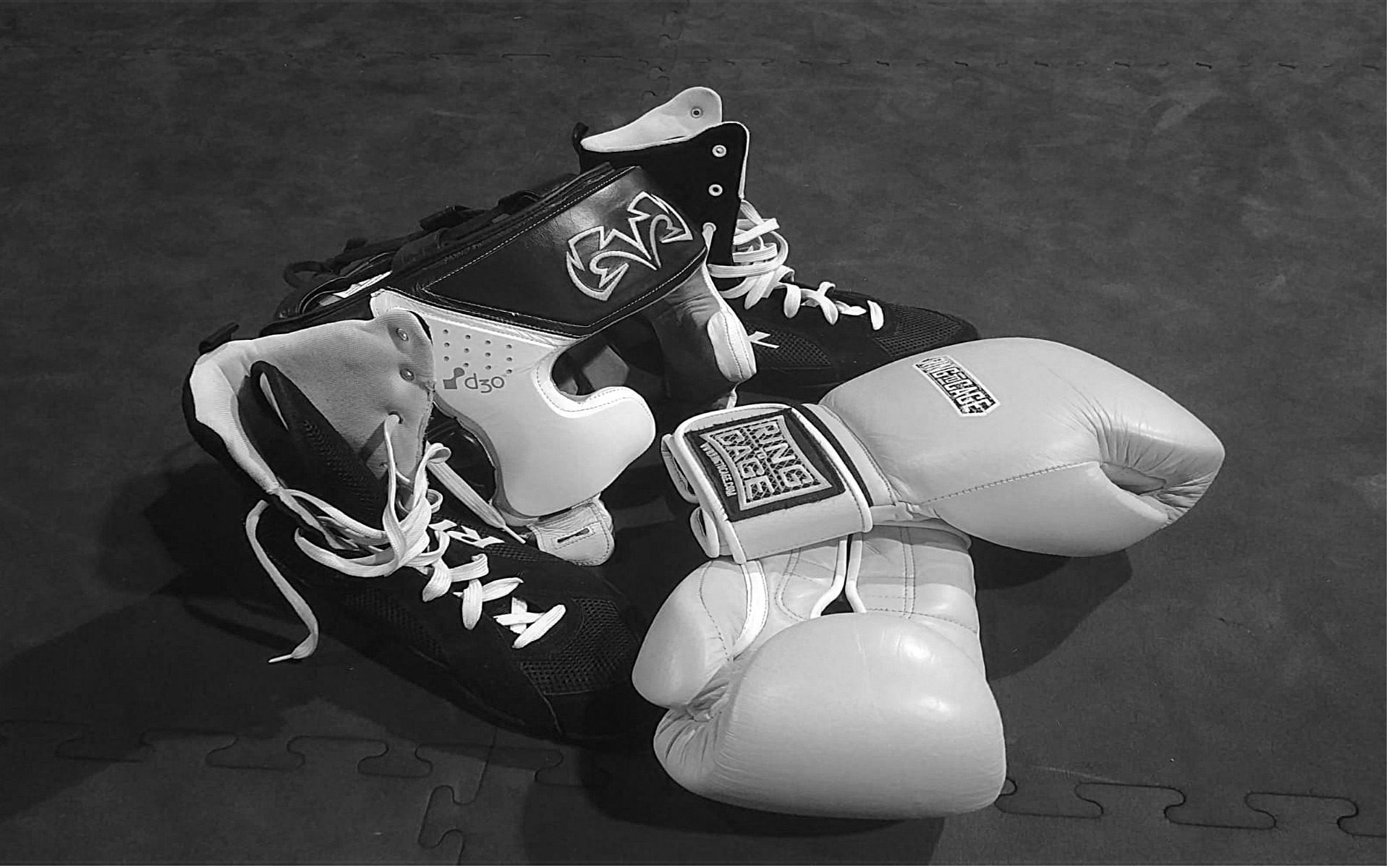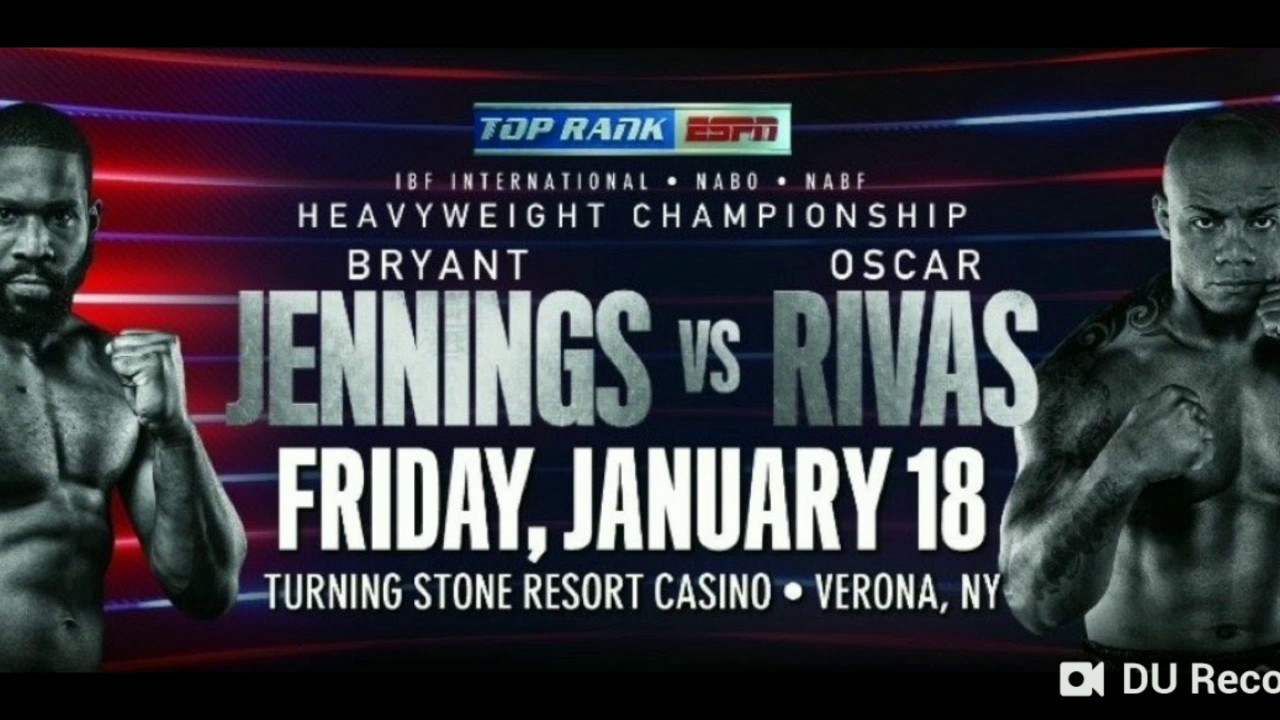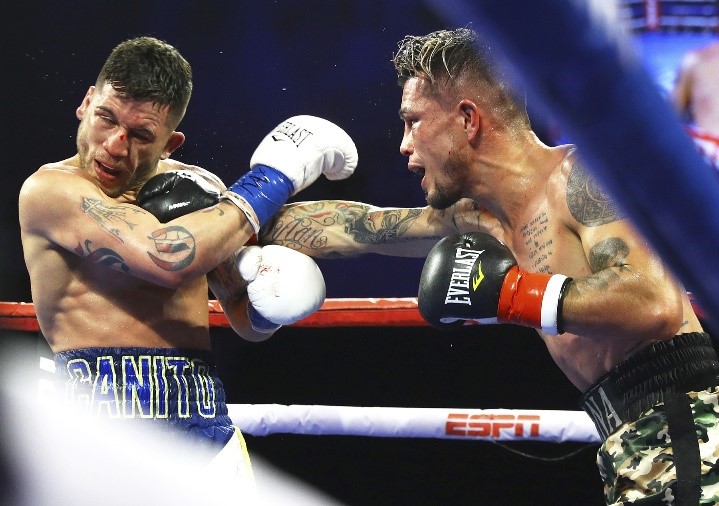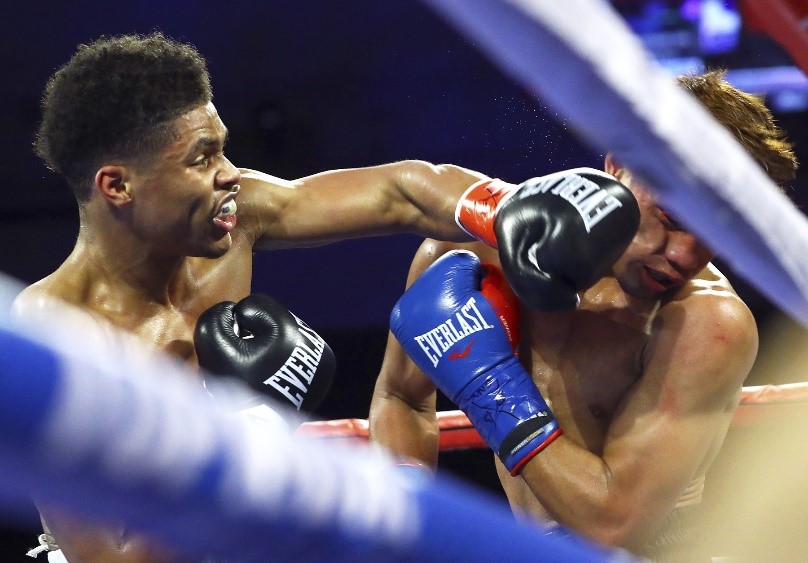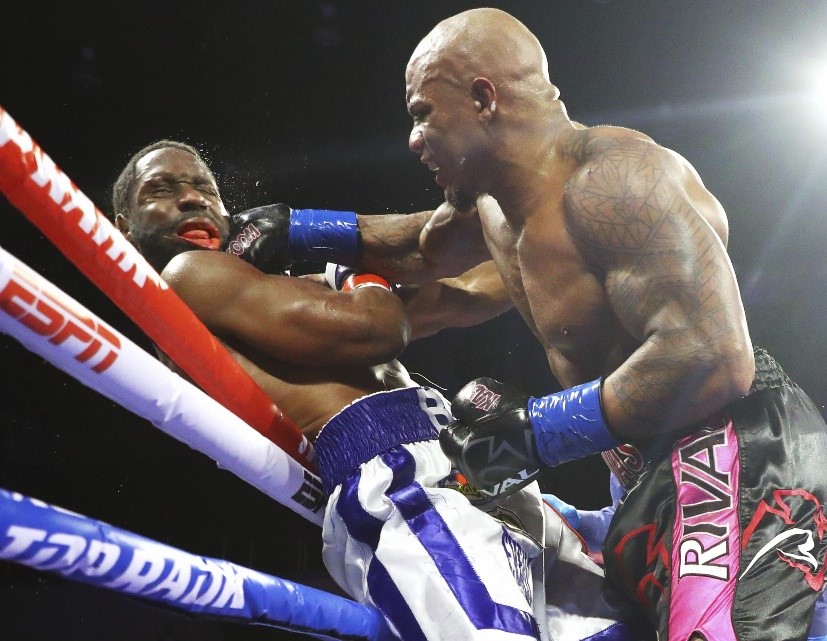Once again I took myself on the road to upstate New York. A 4+ hour drive to one of my favorite venues as of late, Turning Stone Resort Casino in Verona, NY. Catch a Matchroom Boxing USA card headlined by 2 spectacular title fights on paper. In the main event Dmitry Bivol would defend his WBA Light Heavyweight title against Joe Smith Jr. In the co-main event Maurice Hooker would defend his WBO Super Lightweight title against Mikkel LesPierre. Opening up the main card was Callum Johnson vs Sean Monaghan.
Before the main card would start, we were treated to an undercard of talented young prospects. This is the one part that I really enjoy about Matchroom Boxing cards. They give them a platform to show and prove and impress. Nikita Ababiy made quick work of his opponent. Former amateur standout Otha Jones III made his debut and got into a war with Giorgi Gelashvili, which he won by decision. Sergey Kuzmin got a stern test/gut check from veteran Joe Dawejko winning a very close majority decision. The highlight of this undercard was former amateur standout Ismail Mardrimov. Fighting in his second pro fight, he brutally knocked Frank Rojas out cold. The finishing sequence was so violent,I thought I witnessed a fatality. Rojas was unconscious all through being removed via stretcher. Good news was Rojas eventually snapped out of it later on. Madrimov then got on the mic and said he wanted to face Jaime Munguia before he moves to 160.
The main portion of the card started off with a quick 3 round demolition job on Sean Monaghan courtesy of Callum Johnson. Monaghan never seemed to be in the fight. The second round produced 2 knockdowns. On him Bloodied and battered, the ref would have seen fit to end the fight after that round. But Sean’s corner let him out and he was finished in short. Very good win for Johnson, who I am sure will be gunning for the 175 elite in the very near future. For Monaghan, it looks like he may have to look into retiring once again. He had originally uttered retirement following his last fight, a loss to Sullivan Barrera. He still had an itch that needed to be scratched unfortunately.
The co-main event between Maurice Hooker and Mikkel LesPierre was a spirited affair, although a little one sided. Hooker was more than content to box on the outside using a jab and lead right hands. There was also a blown knockdown call on LesPierre in round 5 but that was ruled a slip even though I saw a punch connect. In round 8, LesPierre found himself officially on the canvas courtesy of an overhand right and a left to the body. Honestly I thought the fight was over at that point, but Les Pierre got up and proceeded to take it to the champion. Hooker never really made an effort to put him away again but was content to just boxing him up until the final bell. The 3 judges scored the fight 120-107, 119-108, and 118-109 all for the champion Maurice Hooker. It didn’t seem that the struggle that Hooker making weight didn’t affect him at all. In the post-fight interview mentioned that he wanted any of 140 lb champions in the near future.
The main event between Dmitry Bivol and Joe Smith Jr on paper I thought it would be competitive back and forth fight. There was a clear level shown that night in the ring. Bivol kept Smith Jr. at a distance with a beautiful jab. When Smith Jr. found his way, Bivol would quickly smother him and land body shots. Joe tried being aggressive but more often than not, it got him into trouble. Especially in the 7th and final rounds, he was visibly hurt by Bivol. Not to say Joe didn’t have any moments in the fight. In the waning moments of the 10th round, he landed an overhand right hand that had Bivol out on his feet near the ropes and walking very uncertainly. Had Joe had 20 more seconds, he very well could have ended the fight there. He unfortunately was not able to capitalize on it. Bivol would go on to win a unanimous decision (119-109, 119-109, and 118-110). Post-fight interview, Bivol expressed a desire to drop down and face WBA 168 kingpin Callum Smith. Personally I would like Bivol to try to make a fight with his fellow 175 champions, but time will tell.
Written by Patscorpio for RingGangRadio.com
